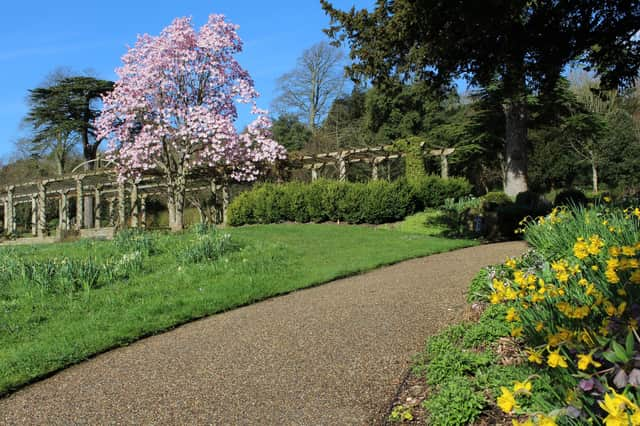Gardening: November is ideal for moving large shrubs, says Brian Kidd


November is a great time to transplant plants especially large ones – but do it only if the weather is kind.
I always advise choosing a pleasant day and you must have the right mindset. You need to look forward to doing jobs like these. They must not seem like overwhelming chores. After all, gardening is meant to be fun and mentally relaxing.
Advertisement
Hide AdAdvertisement
Hide AdWhen moving large specimens it is absolutely essential to keep the roots moist.
On windy days, roots will quickly dry out and if they are left exposed, even for just a few hours, they will actually die.
If a large shrub has to be transplanted, for example a magnolia – which do not like being moved unless it is done properly – a trench the width of a sharp spade needs to be dug out just below the outer edge of the shrub’s leaf canopy.
The trench needs to be the same depth as the spade and as you remove the soil you will notice that quite a lot of fibrous roots will be cut off.
Advertisement
Hide AdAdvertisement
Hide AdThis is all right as long as those which remain are kept moist.
Having done this you now use the spade to undercut the roots.
After cutting half, you will need to cover the newly-exposed cut roots with damp sacking before undercutting the remaining half.
The sacking should now be dragged underneath the root ball. You will find this makes it much easier to get the whole thing out without losing too much soil.
Advertisement
Hide AdAdvertisement
Hide AdIf soil keeps sticking to the blade of the spade, which it probably will do because it’s so wet at this time of year, you will begin to get cross. So, use a piece of wood shaped like a wedge to scrape the mud off the blade. Note: this is a very handy tip!
The shrub should now be planted in its new position and watered, yes, even if the ground is we or even saturated.
In the spring it is a very good idea to spray the stems and leaves with rain water of your newly-positioned shrub, as opposed to over-watering the shrub’s roots.
If the shrub which is to be transplanted is very prickly – a holly or berberis perhaps – cover the whole shrub with thick material or one of those cheap blue tarpaulins you see in markets.
Advertisement
Hide AdAdvertisement
Hide AdThis will protect you, in particular your eyes. And believe me, you will be extremely grateful you will have followed this advice.
If you notice that some of the shoots appear to be dying back during next spring, don’t worry too much. It’s all because of the loss of those roots which you cut away the previous autumn.
All you do is simply prune off the dead parts back to the live shoots and water the plant all over the foliage with Maxicrop Growth Stimulant which is an excellent product to help revive struggling plants of all types.
THIS WEEK’S TOP TIP
This is the best time to plant tulips because the colder weather encourages slugs to be less active. Don’t forget, tulips look wonderful in tubs and pots.
Comment Guidelines
National World encourages reader discussion on our stories. User feedback, insights and back-and-forth exchanges add a rich layer of context to reporting. Please review our Community Guidelines before commenting.